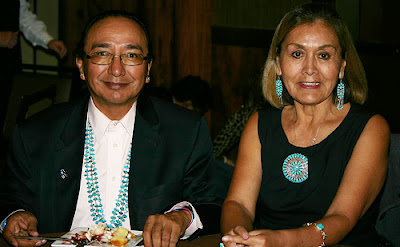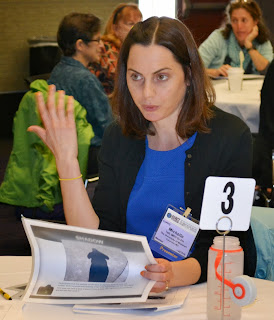As he sat on the panel of speakers at the Closing Session of this year’s APHA Annual Meeting and Exposition, Donald Warne told a story.
Three sisters were walking along the river, when they saw a group of babies in the water. One sister jumped in to save the babies.
One sister said, “We need to teach these babies to swim.”
The third sister kept walking up the river. When the others called to her, she said, “I’m going to find out who’s throwing these babies in the water and I’m going to stop them.”
He paused.
“That’s public health.”
It was a fitting story to help wrap up this year’s Annual Meeting, which ended with a Closing Session about “Improving the Health of Native Peoples” and featured a keynote address by Evan Tlesla Adams, British Columbia’s first Aboriginal Health physician advisor and current deputy provincial health officer for Aboriginal health.
Adams sought to bring to light some of the issues faced by native people in the U.S. and Canada, but also to note that many indigenous people are actually faring quite well.
“I don’t want to tar us,” he said. “We are also very happy, very vibrant people. Only some of us are at risk. Many of us are flourishing.”
As evidence, he pointed to statistics regarding youth suicides among First Nations — or indigenous — people in Canada. In British Columbia, which has 32 languages, 203 tribes and 226,000 indigenous people, almost half of the tribes had no youth suicides from 1992 to 2006.
“We have solved the problem of youth suicide in those places,” he said. But on the other side of the coin, the news is much darker. Ninety percent of the youth suicides that did occur happened in 10 percent of the villages.
Many of the social determinants of indigenous health are the same as they are for the rest of the population — poverty, education, housing — but native people also face issues of self-determination, or the right to participate in decisions about the issues that affect them.
Adams said Canada has made strides in that area, signing partnership agreements that grant more self-determination to native people and bringing them to the table for discussions.
“Nothing about us, without us” has become the rallying cry.
The panel discussion after Adams’ keynote focused on the needs of native people in the United States and became a conversation about how much more progress Canada has made addressing such needs.
For example, Warne, who comes from the Oglala Lakota Tribe of Pine Ridge, South Dakota, noted that tribes rely on block grants for funding. But block grants from the federal government don’t go directly to the tribes; they first go to the states, which distribute the funds.
“Are all states friendly to American Indians? No,” said Warne, who directs the Master of Public Health Program at North Dakota State University.
Pointing to his own experience in South Dakota, he said that the state had historically been happy to count infant deaths in Indian Country in its overall infant mortality statistics to help get more block grant money. But when that money came in, the funds were never distributed to the tribes.
He called the distribution of block grant funds “low-hanging fruit” and an easy way to make sure funds get distributed where they’re needed most.
As always, the Annual Meeting closed on a note of hope.
APHA Executive Director Georges Benjamin, after handing off the gavel to new APHA president Joyce Gaufin, said he hoped attendees — of which the meeting welcomed more than 12,500 — will leave with renewed energy.
“I hope this meeting began a dialogue,” he said. “As the new APHA, I can tell you, we’re very much about science, advocacy and health. As you go home today, I want you to think about all the things we can do as an Association to move this nation forward.”
See you next year in New Orleans!
— C.T.
Above from top to bottom: Closing Session keynote speaker Evan Tlesla Adams; session moderator and new APHA President Joyce Gaufin sits with Adams and fellow panelists Donald Warne, second from right, and D. Kawika Liu of the Consolidated Tribal Health Project; and APHA's Benjamin, left, smiles for the camera alongside Gaufin and outgoing APHA President Adewale Troutman. Photos by Jim Ezell/EZ Event Photography





































